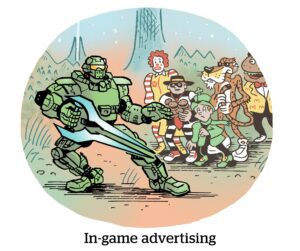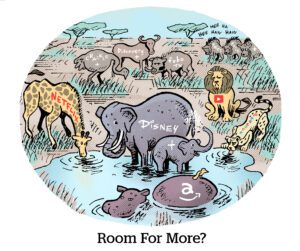Here’s today’s AdExchanger.com news round-up… Want it by email? Sign up here.
The Generative Generation
A pivotal moment for the web just happened, as Google announced the US launch of its generative search experience (GSE) at the I/O summit.
Web users won’t feel an earthquake. But this is a slippery slope to big change.
Google set no benchmarks for what kind or how often search queries will prompt a GSE. Google has also dialed down the number of queries it responds to with GSEs since it started testing last year, Search Engine Land reports.
And as long as the GSE remains relatively poorly monetized compared to established search pages, Google is going to prefer the old (and lucrative) format.
That’s the risk for a megalith business that has a sacred golden cow. When you’re Google, you don’t get in the way of search revenue.
On the other hand, GSEs could prove even more effective earners for Google. Clickthrough rates for links attached to GSEs (“AI Overview link cards” is the jargon) outperform other links, Liz Reid, Google’s head of search, tells Search Engine Land.
However, Google won’t report the links separately to advertisers – a link coming from the AI Overview card is reported as a normal organic search link – so it may be hard to tell.
Ickstagram
Here’s a fresh horror: Kid-focused advertisers worry Meta is serving their ads to sex offenders, The New York Times reports.
A children’s jewelry maker says its Instagram campaign featuring a 5-year-old model was supposed to target women interested in parenting, ballet and similar topics. But campaign reporting revealed the ads served mostly to men.
The NYT attempted to recreate these findings by running its own campaign with the same creative and similar targeting. When the ads included a picture of a child, Instagram served them to men 95% of the time.
The ads also drew engagement from registered sex offenders, who sent the NYT sexualized direct messages after it ran the test campaign.
Other advertisers who sell kids clothing and dancewear reported they need to exclude men from Meta campaigns, or the majority of ads serve to adult men. The reasons are part algorithm, part economic.
“Metaphiles” (as the New Mexico attorney general put it) are top engagers with content showing young girls. Normally, such interest would translate into sales. But Metaphiles aren’t parents to young dancers; they’re predators. Plus, women cost more to reach than men, so Meta’s algorithm likely includes men to keep performance KPIs in line.
Meta describes the test campaign as a “manufactured experience.” But it agreed that competition for female users, combined with the low quality of the NYT ads, could direct the ads to a cheap source of highly engaged impressions: in this case, creeps.
Fox’s Spotlight
Following Amazon’s playbook, Fox jumped right into its advertiser pitch during its upfronts this week.
Younger people are spending more time watching Fox, Jeff Collins, president of ad sales, marketing and brand partnerships, told advertisers in attendance. The proof? Since the 2020 upfront season, Fox grew its total ad-supported audience by 15%, and audiences aged 18-49 grew 33% in the same time frame.
On the ad tech front, the programmer touted clean room integrations and plans for new shoppable ad formats.
After those talking points, Fox’s upfront presentation was nothing but news, sports and Gordon Ramsay.
Unsurprisingly, Fox spent a lot of time highlighting its news programming, including a new viewing feature to help viewers keep track of ballot counts throughout voting periods.
Fox also highlighted sports programming with leagues like the NFL and MLB. Although, interestingly enough, execs didn’t discuss the programmer’s sports-focused streaming venture with Disney and Warner Bros. Discovery as expected.
But Wait, There’s More!
Amazon Web Services CEO Adam Selipsky is stepping down, effective June 3, according to a leaked email. [The Verge]
Gartner survey finds marketer budgets have fallen to 7.7% of overall company revenue in 2024, the lowest percentage since 2021 and below pre-pandemic averages. [WSJ]
Nielsen releases its first ever ranking of top media companies according to audience share across broadcast, cable and streaming. [release]
You’re Hired!
Index Exchange welcomes Cadi Jones As SVP, Europe. [release]
StackAdapt appoints Ryan Nelsen as CMO. [release]
Bombora hires Putney Cloos as CMO. [release]
Publicis Groupe names Nannette LaFond-Dufour its first chief impact officer. [release]














